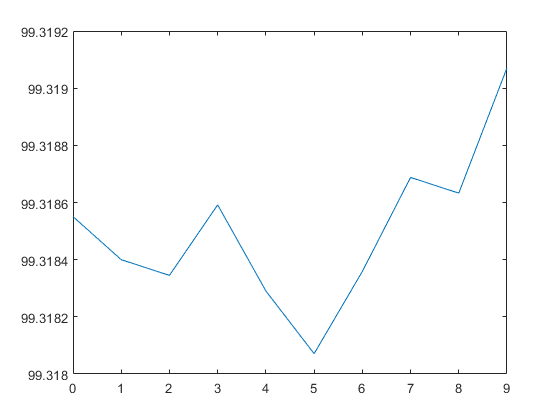Measure Frequency Using NI Devices
This example shows how to measure frequency to determine rate of flow of fluid using a flow sensor. The sensor generates a digital signal with frequency that correlates to the rate of flow of fluid.
Create a Counter Input Channel
Use daq to create a DataAcquisition and addinput to add a counter input channel with Frequency measurement type. For this example, use CompactDAQ chassis NI c9178 and module NI 9402 with ID cDAQ1Mod5.
dq = daq("ni"); ch = addinput(dq,"cDAQ1Mod5", "ctr0", "Frequency"); ch
ch =
Index Type Device Channel Measurement Type Range Name
_____ ____ ___________ _______ ________________ _____ ________________
1 "ci" "cDAQ1Mod5" "ctr0" "Frequency" "n/a" "cDAQ1Mod5_ctr0"
Determine the Terminal of the Counter Input Channel
To connect the input signal to the correct terminal, examine the Terminal property of the channel. The terminal is determined by the hardware.
ch.Terminal
ans =
'PFI1'
Measure Frequency
To determine if the counter is operational, input a single scan while the motor is rotating.
read(dq)
ans =
timetable
Time cDAQ1Mod5_ctr0
_____ ______________
0 sec 100
Monitor Frequency over Time
Use the hardware clock to acquire multiple counter measurements over time. NI counter devices require an external clock. By adding an analog input channel for a module on the same chassis, the session shares an internal clock with both modules.
dq = daq("ni"); dq.Rate = 1; addinput(dq,"cDAQ1Mod1", "ai0", "Voltage"); addinput(dq,"cDAQ1Mod5", "ctr0", "Frequency"); data = read(dq, seconds(10)); plot(data.Time, data.cDAQ1Mod5_ctr0);
